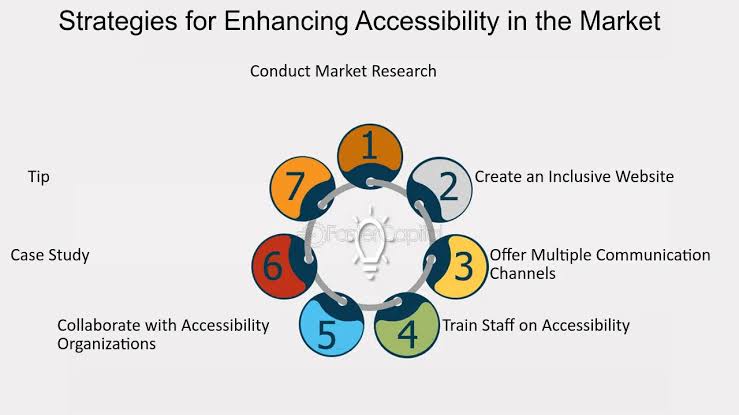Unlocking Inclusivity: How Accessibility Enhances Market Reach and Customer Satisfaction

In an increasingly diverse consumer market, accessibility is no longer just a nice-to-have feature; it’s a crucial component of business strategy. Accessibility ensures that products and services are usable by everyone, regardless of their physical or cognitive abilities. This approach not only supports those with disabilities but also enhances the user experience for a broader audience. This article will explore how enhancing accessibility can expand market reach and boost customer satisfaction, and provide a detailed guide on planning and executing an accessibility audit.
The Business Case for Accessibility
Expanding Market Reach
Accessible services open your business to a wider audience, including the millions of people living with disabilities. According to the World Health Organization, over a billion people globally have some form of disability. This group’s spending power, often referred to as the “disability market,” is substantial but frequently overlooked. By designing products and services that are accessible, companies can tap into this large and growing market, gaining loyal customers and increasing their market reach. Chris Bourne, Chief Marketing Officer at Pumex, emphasizes this, stating, “At Pumex, we understand that having an accessible website is a competitive advantage and a legal need. We’ve shown our dedication to inclusion by broadening our market reach to accommodate consumers with various demands through improving accessibility”
Enhancing Customer Satisfaction
Accessibility improvements often lead to better usability for all customers. For example, closed captioning benefits not only those who are hard of hearing but also people in noisy environments or those who are not native speakers of the language. Implementing high-contrast color schemes and clear font choices can aid users with vision impairments and also improve overall readability for all users. Companies that prioritize accessibility are often seen as more caring and inclusive, which enhances their brand reputation and increases customer loyalty.
Planning an Accessibility Audit
Understanding Accessibility Standards
To begin planning an accessibility audit, companies must first understand the relevant standards. The Americans with Disabilities Act (ADA) and the Web Content Accessibility Guidelines (WCAG) provide frameworks for compliance. WCAG, for example, offers guidelines for digital accessibility, including recommendations for text, images, sounds, and code structure. Familiarizing with these standards is crucial for ensuring that the audit covers all necessary aspects of accessibility.
Assembling the Audit Team
An effective accessibility audit requires a diverse team that can bring different perspectives to the table. This team should include IT specialists, design experts, and representatives from the customer service and marketing departments. Including people with disabilities in the audit team can provide invaluable insights that might be overlooked by others. Engaging various stakeholders early in the process also helps in gaining comprehensive feedback and fostering a culture of inclusivity. Michael Collins, Managing Director at Sphere IT, notes, “We started the process of improving website accessibility with a thorough audit, which helped us find places where we might remove obstacles for people with disabilities”
Executing an Accessibility Audit
Comprehensive Assessment
The audit should assess both digital and physical accessibility. For digital platforms, automated tools can help identify issues like poor contrast or missing image descriptions. However, manual testing by users with disabilities is also crucial as it brings out nuanced usability challenges that automated tools might miss. For physical locations, assessments might include ease of entry, navigation, and the availability of necessary facilities like accessible restrooms.
Reporting and Prioritizing Fixes
Once the audit is complete, compiling the findings into a clear and actionable report is essential. This report should prioritize issues based on their impact on accessibility and the complexity of implementing solutions. High-priority fixes might include issues that render a service unusable for certain users, such as inaccessible checkout processes on an e-commerce site. Companies should plan for immediate remediation of these critical issues, followed by less urgent enhancements. Bjørn Barfoed Vestergaard, owner of Amp 99, emphasizes the importance of continuous improvement and transparency, saying, “Incorporating accessibility from the beginning into our design and development processes ensures that it becomes a necessary part of our product lifecycle rather than an afterthought
Conclusion
Enhancing accessibility is not just about compliance; it’s about opening your business to a wider market and improving the overall customer experience. By conducting thorough accessibility audits and acting on their findings, companies can demonstrate their commitment to inclusivity and benefit from increased customer satisfaction and loyalty. Let this guide be a starting point for your organization to embrace accessibility as a cornerstone of your business strategy.





